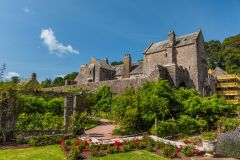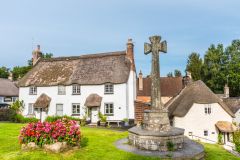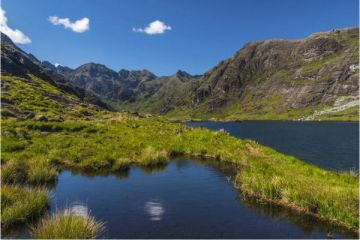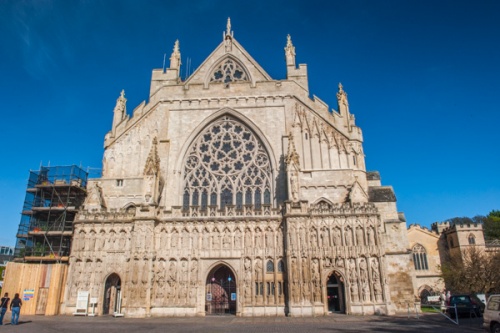
Devon offers an intriguing mix of seaside resorts, lonely countryside walks, and bustling modern cities. One of these cities is Exeter, the administrative centre of the county and home to the superb Exeter Cathedral. The cathedral boasts extraordinary Early English and Decorated style Gothic vaulting. The Guildhall dates back to the late 11th century, making it the oldest municipal building in England still in use. Near Exeter is Powderham Castle, a fine stately home built on the remains of a 14th-century stronghold.
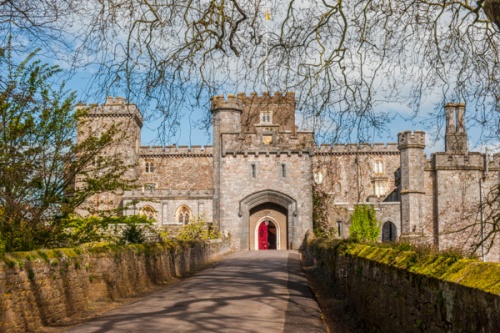
The other major city is Plymouth, long a major maritime centre. It was from here that Sir Francis Drake set out on his voyage around the world in 1577, and from here that Drake calmly finished his game of bowls on Plymouth Hoe before setting out to do battle with the Spanish Armada in 1588.
The best views over Plymouth Sound can still be had from the grassy Hoe, where a statue of Drake marks the probable spot of his bowling green. Buckland Abbey, Drake's home from 1581, is north of the city.
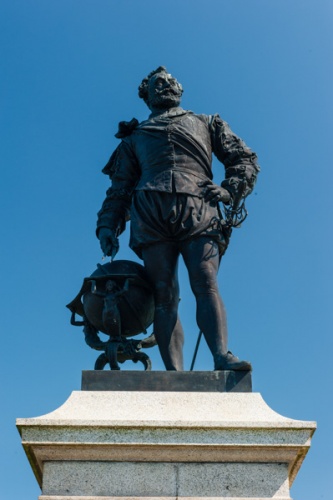
The mild climate of South Devon has given birth to the fancifully-named English Riviera, a collection of small resort towns and villages dotted along the coastline. More properly the name applies to the resorts of Torquay, Paignton, and Brixham.
The largest is Torquay, but while the town can claim Agatha Christie as a native, and exhibits based on the author's life can be seen at the Torquay Museum, it is probably not the most attractive of the Riviera towns. More appealing perhaps is Brixham, a fishing village now given over to the delights of sand and sun.
Near Brixham, and much more well-known, is the port of Dartmouth, with its proud naval tradition. It was from Dartmouth that the Pilgrim's set sail for America in 1620, but now the harbour is filled with yachts from around the globe. Dartmouth Castle is a 15th-century fortress reached by regular ferry boats from the town.
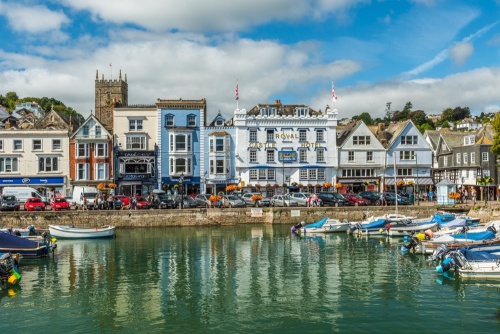
A ten-mile cruise up the Dart River brings you to Totnes, an attractive market town that was once a thriving centre of the wool industry. Elizabethan "black-and-white" buildings grace Totnes, which has re-created itself as a centre for the arts, but hovering over the town is the impressive ruin of Totnes Castle.
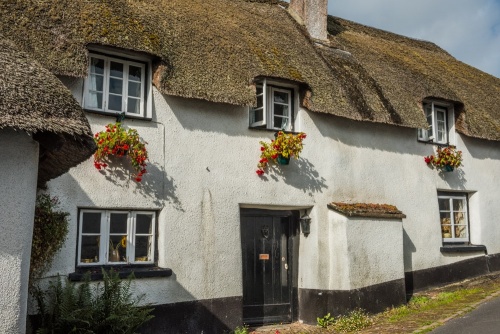
If you've had enough of cities, it must be time for one of the two national parks that lie within Devon. In the middle of the county is Dartmoor, where tall granite "tors" stand out atop two high plateaus split by the valley of the River Dart.
On those plateaus the famous Dartmoor ponies still graze. Dartmoor is also blessed with an abundance of prehistoric remains. Standing stones, hut circles and hill forts dot the landscape of the moor.
There are remains of settlements at Grimspound and Standon Down, and several varieties of stone rows and circles near Merrivale. The moor is also famous for its "clapper bridges", with the best at Dartmeet and Postbridge. See our Dartmoor Photo Gallery for more.
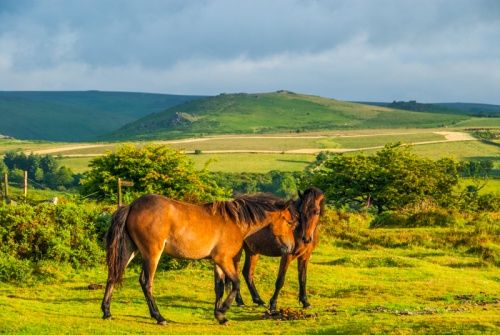
Along the north coast is Exmoor National Park, home to some of the most varied and beautiful scenery in England. The moors contain large deposits of peat, which form bogs due to the high rainfall. The peat moors give way to heather uplands, replete with a variety of grasses and plants, such as gorse and whortleberry.





